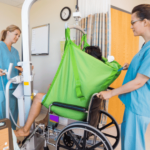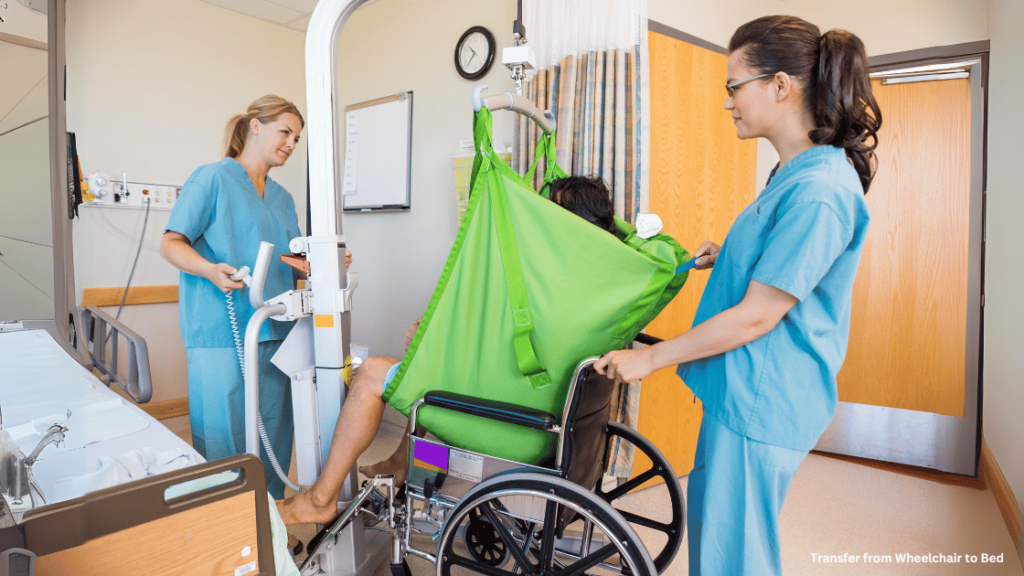We all know someone who uses a wheelchair, or maybe we even use one ourselves. It's a common sight, but it can be tricky to know how to help someone safely get in and out of their chair. That's where this guide comes in! We're going to cover everything you need to know about safe wheelchair transfers, from the basics to the more complex scenarios.
Let's get started.
Table of Contents
Why Safety Matters in Wheelchair Transfers
It might seem simple, but helping someone move in and out of their chair requires careful technique and a bit of teamwork. A wobbly transfer can lead to a nasty fall, causing pain, injury, and even fear for the person you're helping. We want to make sure every move is done with confidence and safety, so that everyone feels comfortable and secure.
Basic Principles for Wheelchair Transfers
Whether you're helping someone get into bed, a chair, a car, or even just a different position in their wheelchair, the basics are the same:
- Get Close: Move the wheelchair as close as possible to the destination. The less space between the two surfaces, the easier the transfer will be.
- Lock It Up: Always, always, always lock those brakes! This is crucial for preventing the chair from rolling away.
- Footrests Out of the Way: Before you start, flip up or swing out those footrests to make sure they're not in the way.
- Good Posture: Keep your back straight and bend your knees. This way, you're using your leg muscles for lifting, not your back, reducing the risk of strain.
- Natural Curve: Try to maintain a natural curve in your back while transferring. Use proper posture to help keep your back safe and prevent injury.
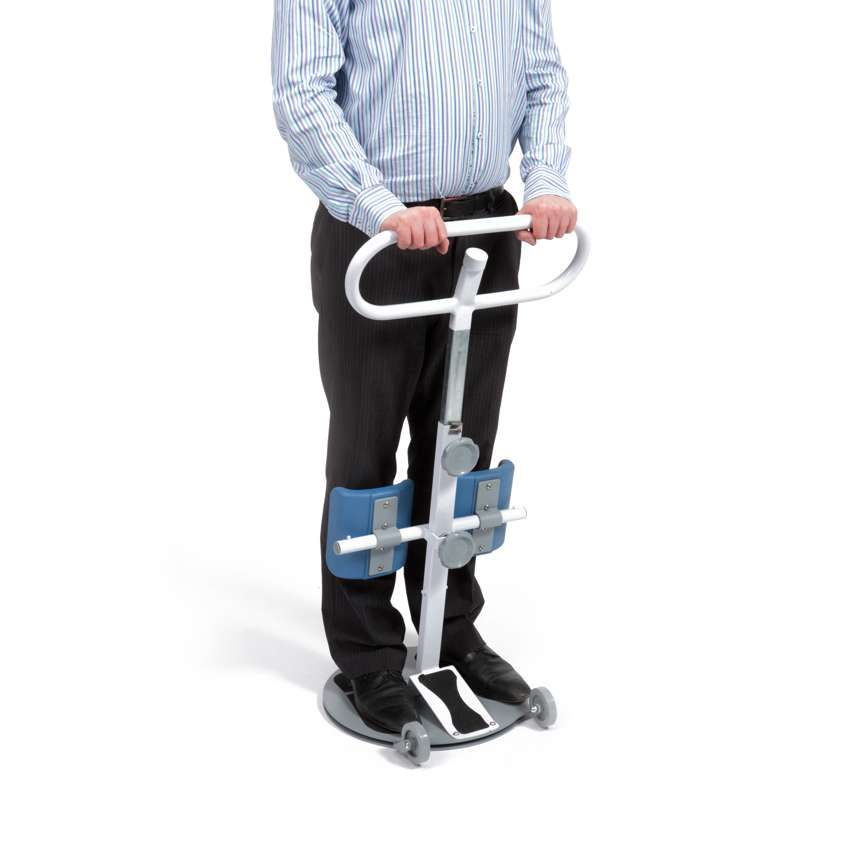
Communication is Key
Before you even start, take a moment to chat with the person you're helping. Explain what you're going to do, how you're going to do it, and ask if they have any concerns or preferences. This builds trust and helps them to feel in control of the transfer process.
Helping Hands: Teamwork Makes the Dream Work
Some transfers are easy enough to manage on your own, but others might require a helping hand. This is where teamwork comes in, and it's essential to communicate effectively with your partner.
The Essential Tool: The Gait Belt
One of the most helpful tools for wheelchair transfers is the gait belt. It's a wide, sturdy belt that goes around the person's waist. This provides a secure grip for you to support them during the transfer and helps you to lift safely.
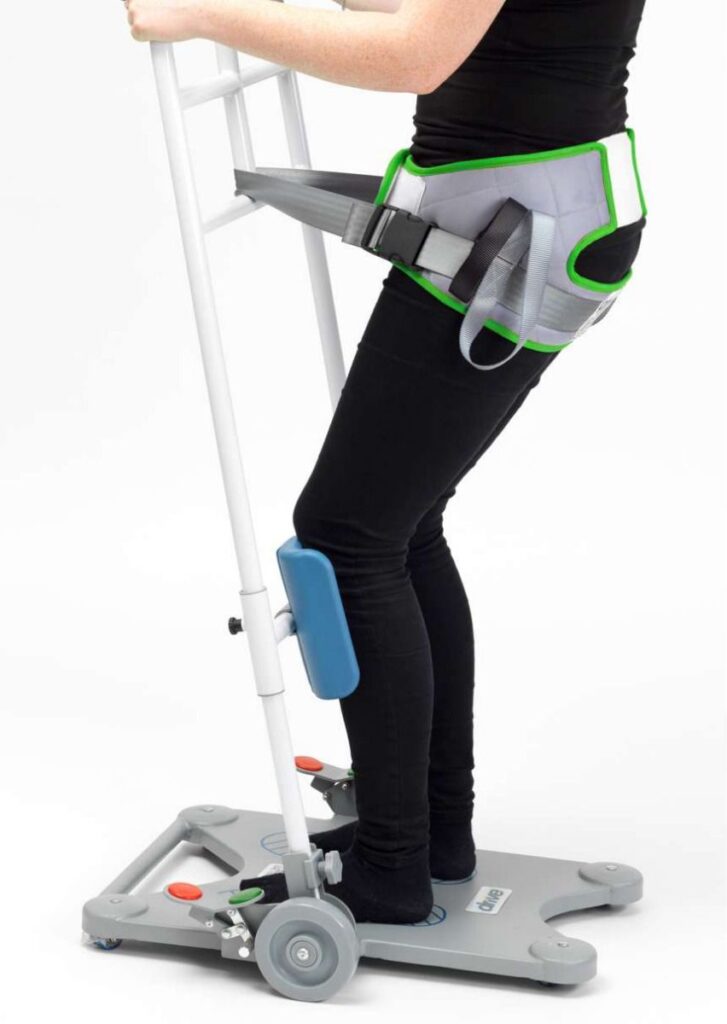
Gait Belt Safety Tips
- Correct Placement: The belt should be placed around the person's natural waist, snug but not too tight. It should be positioned over their clothes, not directly on their skin.
- Proper Grip: When using a gait belt, use an underhand grip, placing your hands at the sides of the belt, rather than gripping the buckle. This helps prevent the belt from slipping.
- Safe Lifting: Remember to lift with your legs, not your back. Keep your back straight and your core engaged to avoid strain.
Types of Wheelchair Transfers
Now that we've covered the basics, let's dive into the different methods for transferring someone in and out of their chair:
Using a Hoist & Sling
For people with limited mobility or who can't bear much weight, a hoist with a sling is the safest and easiest way to transfer.
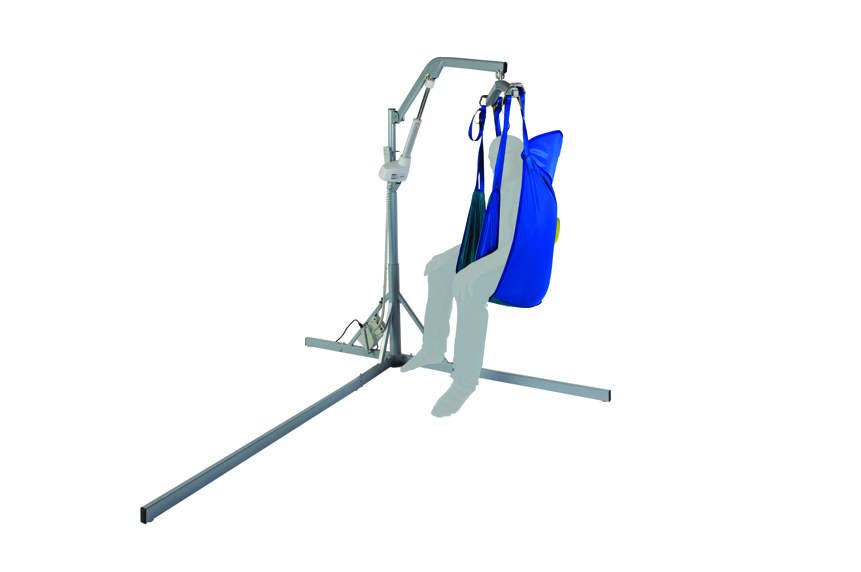
- Preparing for the Hoist: Ensure the hoist is positioned close to the bed or chair, making sure it's stable and locked. Gently roll the person to one side and slide the sling underneath them, ensuring it's positioned correctly.
- The Lift: Engage the lifting mechanism to raise the person off the bed or chair. Carefully move the hoist and the person towards the wheelchair, ensuring there's enough clearance. Gently lower them into the chair, using the hoist's controls for a smooth descent.
- Important Tips: Always have a second person assist with guiding the person into the chair and making sure they're comfortable once seated.
Using a Transfer Board
Transfer boards are smooth, flat boards that act like a bridge between two surfaces, making it easier for someone to slide from one to the other.
- Preparation: Position the transfer board securely under the person's buttocks, with one end on the bed and the other end on the wheelchair seat.
- The Transfer: Help the person lean forward and slowly slide across the board, guiding them with gentle pressure if needed. Ensure the board is stable and doesn't move during the transfer.
- Tips: This method is best for people who can bear some weight and have good upper body strength.
Using a Gait Belt
The gait belt is a versatile tool that can be used for standing transfers.
- Preparation: Ensure the person is seated at the edge of the bed or chair with their feet flat on the floor and their knees at less than a 90-degree angle.
- The Transfer: Grasp the gait belt at the sides, providing support as you guide the person to stand. Once standing, walk hip-to-hip with them, maintaining a secure grip on the belt. Gently guide them toward the wheelchair and help them lower themselves into a seated position.
- Tips: If the person has limited balance or needs extra assistance, have a second person stand behind them to provide additional support.
Solo Transfers: Mastering Independent Movement
Some people are able to manage their own transfers with minimal assistance. Here are some techniques for solo transfers:
1. Using a Transfer Board
This method works similarly to the assisted transfer, but the person will be doing the sliding themselves.
- Preparation: Ensure the transfer board is positioned securely, and that the person has a clear path to slide across.
- The Transfer: Help the person lean forward and slide across the board, providing encouragement and support if needed.
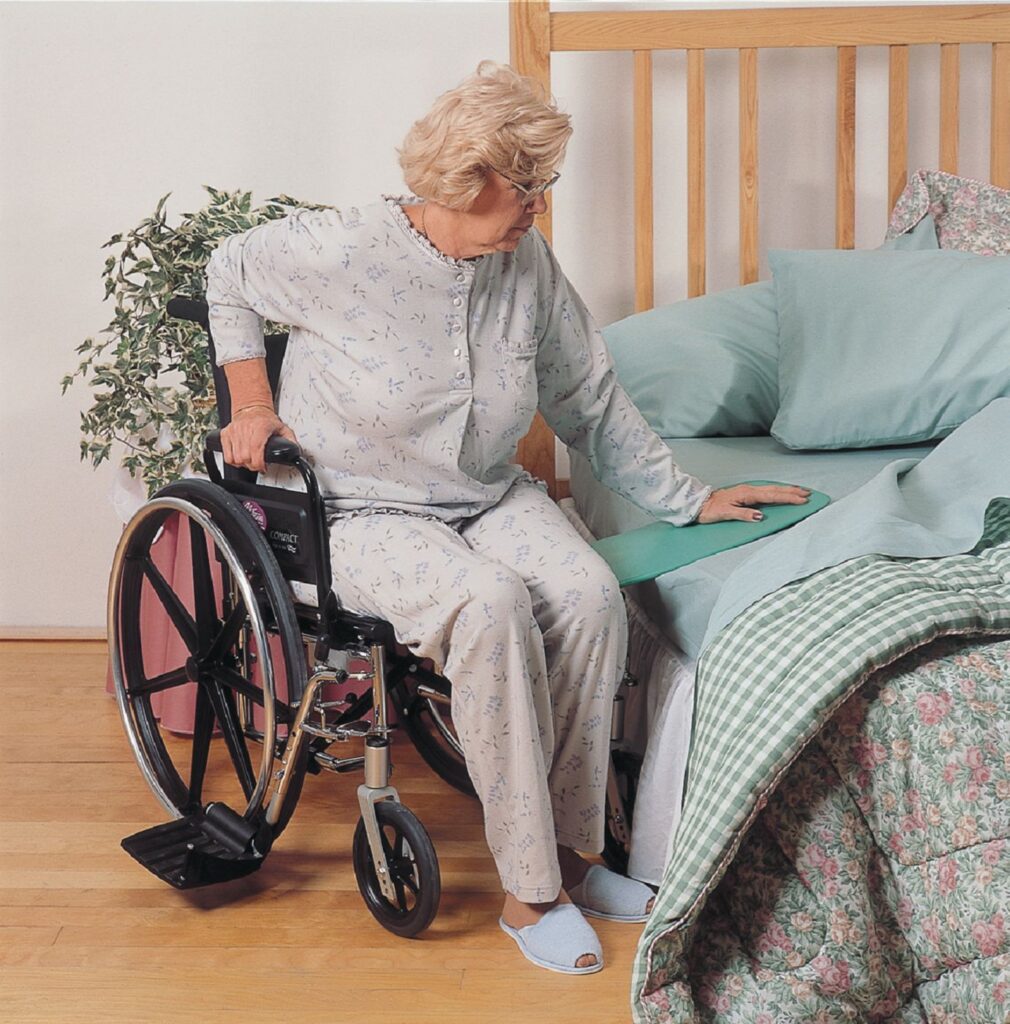
2. Making a Transfer Without a Board
This technique requires good upper body strength and balance.
- Preparation: Ensure the wheelchair is positioned as close as possible to the destination, with little space between the surfaces.
- The Transfer: Push up from the surface as if doing a pressure release, swing through, and turn over the wheelchair's wheels to land safely on the other side.
Transferring From the Floor
It can happen! If someone falls to the floor, there are a few different floor-to-chair techniques that can help, depending on the person's size, strength, and flexibility. It's best to consult with an occupational therapist for specific advice tailored to their individual needs.
Transferring In and Out of Cars
This can be one of the most challenging transfers. The basics remain the same, but you might need an extra person to help, especially at first. The amount of assistance needed will depend on the person's strength, the car's height, and how comfortable they are with the transfer.
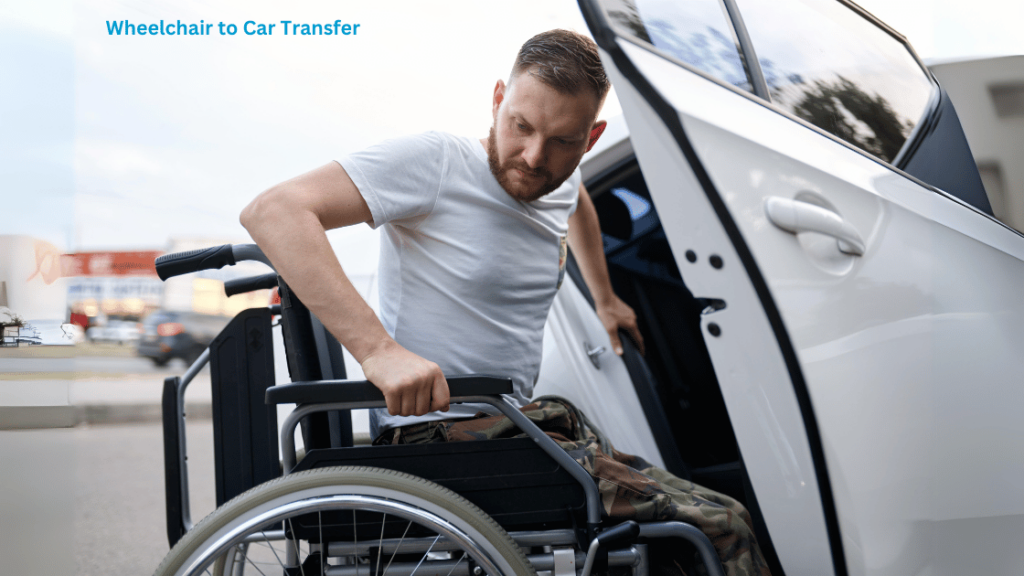
Steps for Car Transfers
- Prep the Scene: Move the car to a location with plenty of space for the wheelchair and ensure the car seat is pushed all the way back.
- Position the Wheelchair: Angle the wheelchair close to the car door.
- Secure the Wheelchair: Lock the brakes and move the footrests out of the way.
- Gait Belt Time: Secure the gait belt around the person's waist.
- Time to Stand: Help the person to stand, using the gait belt for support.
- Pivot & Turn: Gently guide them to turn towards the car seat.
- Sit Back: Help them bend their knees and slowly sit into the car seat.
- Legs in: Assist them in lifting their legs into the car.
- Safety First: Buckle them up securely and close the door.
Preventing Injuries During Wheelchair Transfers
We've already discussed safety tips, but here are a few more to keep in mind:
- Mind Your Back: Always use proper lifting techniques to avoid straining your back. Keep your core engaged and lift with your legs, not your back.
- Communicate Clearly: Make sure you're on the same page with the person you're helping. Let them know what you're doing at each step.
- Know Your Limits: If you're not sure you can safely help someone transfer, don't try to do it alone. Ask for assistance from another person or a professional.
Essential Equipment and Aids for Safe Transfers
In addition to a gait belt, here are some other helpful tools for safe and smooth wheelchair transfers:
- Transfer Boards: These come in different sizes and materials, and they're essential for transfers between surfaces of different heights.
- Grab Bars and Handrails: Provide additional support for people who need a little extra assistance.
- Adjustable Height Transfer Surfaces: Ensure that the wheelchair and the destination are at a similar height, making the transfer easier and safer.
- Specialised Seating: For people with specific needs, there are specialized cushions, supports, and padding available to ensure comfort and stability.
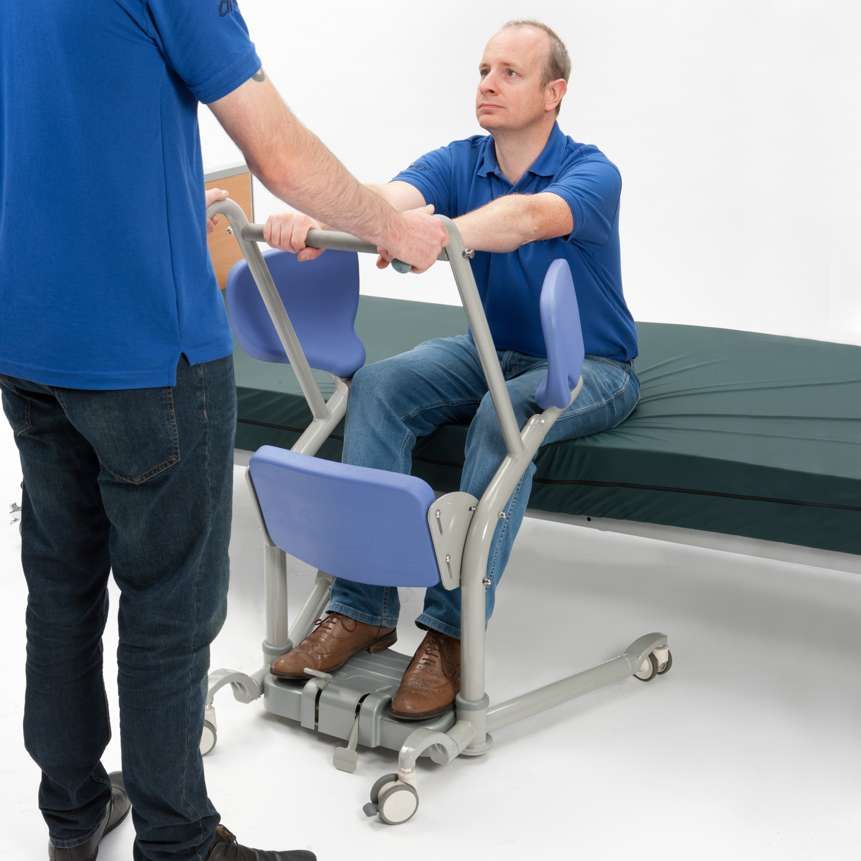
Training and Education for Caregivers
Learning how to do wheelchair transfers properly is crucial for caregivers. Here are some resources to help you improve your skills and confidence:
- Occupational Therapists: They're experts in helping people with mobility challenges and can teach you the best techniques for safe and efficient transfers.
- Online Resources: There are many websites and videos available online that offer information and demonstrations of wheelchair transfers.
- Caregiver Training Programs: Many organisations and community centres offer training programs and workshops for caregivers, covering topics like safe transfers, communication skills, and problem-solving strategies.
Conclusion
Helping someone get in and out of their wheelchair safely and confidently is a rewarding experience. By understanding the basics, practising the right techniques, and communicating clearly, you can make the process smooth and comfortable for both you and the person you're helping. Always prioritise safety, and don't hesitate to ask for help if you need it. Remember, everyone deserves to move around with dignity and independence.
At Mobility Shop, we have a wide stock of hoists, slings, transfer aids, support aids, grab bars, grab rails, mobility aids, and disability aids to help make transfers safer and easier. Visit our category pages to explore our range of products and find the right solutions for your needs.
Frequently Asked Questions
How to make a safe wheelchair transfer?
Safety is paramount! Here's how to create a secure transfer:
1. Clear the way: Ensure a clutter-free path between the wheelchair and the surface you're transferring to.
2. Lock it up: Always engage the wheelchair brakes.
3. Use the right tools: Consider using transfer belts, sliding boards, or other assistive devices for added support and stability.
4. Communication is key: Talk to the person you're assisting, explaining each step and letting them help where possible.
5. Know your limits: Don't attempt a transfer beyond your strength. Ask for help if needed.
What is the safest way to transfer a client from a bed to a wheelchair?
The safest way to transfer a client from bed to a wheelchair is by using a gait belt or transfer board. Ensure the bed and wheelchair are at the same height, lock the wheelchair brakes, and position the wheelchair at a slight angle to the bed. Help the client to the edge of the bed, then assist them in standing and pivoting into the wheelchair.
When preparing a patient for transfer, how should a wheelchair be positioned?
Position the wheelchair as close to the patient as possible, preferably at a slight angle to the bed or transfer surface. Ensure the brakes are locked, and move the footrests out of the way.
What are the safe and effective transfer techniques?
Safe and effective transfer techniques include using a gait belt, maintaining a natural curve in your back, locking the wheelchair brakes, and ensuring clear communication. Techniques such as the pivot transfer, slide board transfer, and using hoists are also effective.
How do you position a wheelchair for a transfer?
Position the wheelchair close to the transfer surface, at a slight angle. Lock the brakes to keep the wheelchair stationary and move the footrests out of the way to create a clear path.
What is the most important precaution when transferring a patient?
The most important precaution when transferring a patient is to ensure their safety by locking the wheelchair brakes and using proper body mechanics to avoid injuries. Clear communication with the patient is also crucial.
How do you safely transfer from a wheelchair?
To safely transfer from a wheelchair, position the wheelchair close to the destination, lock the brakes, and move the footrests out of the way. Use a gait belt for support, stand up while maintaining a natural curve in your back, and pivot towards the destination.
What are the proper steps to safely implement a wheelchair transfer?
The proper steps include positioning the wheelchair close to the transfer surface, locking the brakes, moving the footrests, using a gait belt, guiding the patient to stand and pivot, and ensuring they are seated securely in the new location.
What are three important factors when transferring a patient from bed to wheelchair?
Three important factors are:
1. Positioning the wheelchair close to the bed and locking the brakes.
2. Using a gait belt or transfer board for additional support.
3. Ensuring clear communication and proper body mechanics during the transfer.
What are the different types of wheelchair transfers?
Different types of wheelchair transfers include the pivot transfer, slide board transfer, and using hoist. Each type depends on the patient's mobility level and the specific transfer situation.
What are the general rules when transferring a patient from a wheelchair to a table?
General rules include positioning the wheelchair close to the table, locking the brakes, moving the footrests, using a gait belt, guiding the patient to stand and pivot, and ensuring they are seated securely at the table.
How do you position the wheelchair before transferring the patient?
Position the wheelchair close to the transfer surface, ideally at a slight angle. Lock the brakes and move the footrests to create a clear path for the transfer.
What position should you be in when transferring a patient to a wheelchair?
When transferring a patient to a wheelchair, you should be close to the patient, maintaining a natural curve in your back, with your knees slightly bent. Use a gait belt for support and guide the patient safely into the wheelchair.
How do you safely transfer from a wheelchair?
To safely transfer from a wheelchair, position the wheelchair close to the destination, lock the brakes, and move the footrests. Use a gait belt for support, stand up while maintaining a natural curve in your back, and pivot towards the new location.
How would you safely transfer a patient from a wheelchair onto a toilet?
Follow these steps, remembering to prioritise safety and communication:
1. Position: Wheelchair beside the toilet, facing the front, with brakes locked.
2. Prepare: Lower the toilet seat and ensure grab bars (if present) are within reach.
3. Assist: Help the individual stand, pivot, and lower themselves onto the toilet seat.

